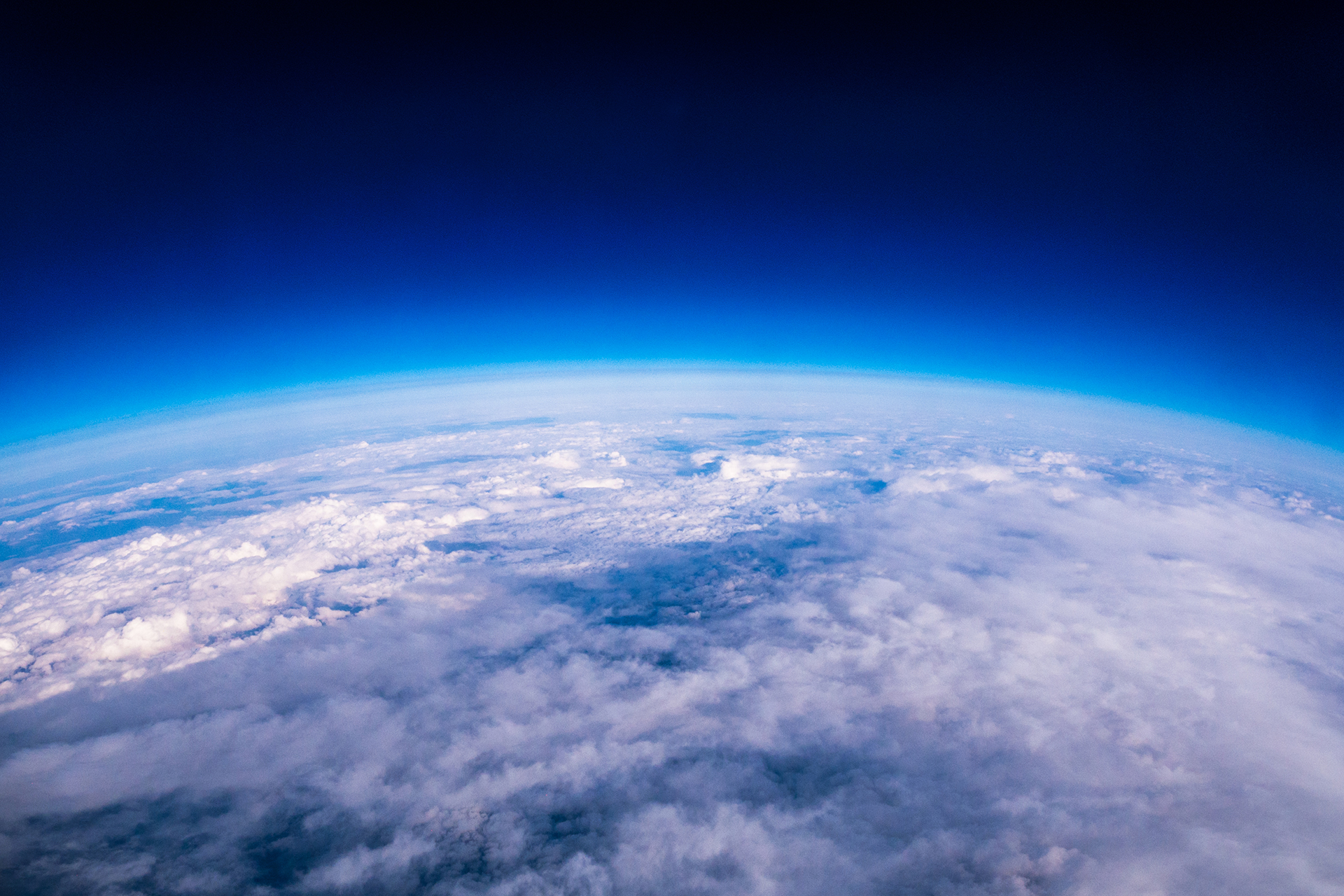Imagine taking a deep breath, feeling fresh air fill your lungs. That air, invisible yet vital, is part of Earth’s atmosphere, a dynamic layer enveloping our planet. It shields us, regulates climate, and enables life as we know it. But what makes the atmosphere unique? Why does it hold oxygen? How do phenomena like auroras or ozone holes work? At The Astronomy Insider, we dive into the secrets of planetary science, exploring the composition, mysteries, and importance of Earth’s atmosphere, plus how Americans can observe its wonders in the night sky.
What is Earth’s Atmosphere in Planetary Science?
Earth’s atmosphere, a key focus of planetary science, is a thin layer of gases held by gravity, extending about 6,200 miles (10,000 km), with 99% of its mass within 31 miles (50 km). Composed mainly of nitrogen (78%), oxygen (21%), and traces of argon, carbon dioxide, water vapor, and other gases, it’s divided into layers:
- Troposphere (0–7 miles): Where we live, hosting weather and clouds.
- Stratosphere (7–31 miles): Home to the ozone layer, absorbing UV rays.
- Mesosphere (31–50 miles): Where meteors burn, creating shooting stars.
- Thermosphere (50–440 miles): Site of auroras and the ionosphere, reflecting radio waves.
- Exosphere (440–6,200 miles): Transition to space, with sparse particles.
Studied through space technology, Earth’s atmosphere is compared to Mars’ thin veil or Venus’ toxic shroud, highlighting its role in space exploration.
The Origin of the Atmosphere: A Cosmic Mystery
How did Earth gain its atmosphere? This enigma drives astrobiology and planetary science. Billions of years ago, Earth’s early atmosphere likely consisted of volcanic gases like carbon dioxide, methane, and water vapor, released during planet formation. Comets and asteroids delivered volatile compounds, shaping this primordial mix. Oxygen, vital for life, was absent.
Around 2.4 billion years ago, the Great Oxygenation Event, studied by NASA, changed everything. Photosynthetic cyanobacteria produced oxygen, reshaping the atmosphere and enabling complex life. Earth’s magnetic field, a focus of space exploration, protected this oxygen from solar wind erosion, unlike Mars or Venus. Why Earth retained its life-friendly atmosphere remains a hot topic in astrophysics.
Why the Atmosphere Matters
Earth’s atmosphere is critical for life and planetary balance:
- Protection: The ozone layer blocks harmful UV rays, while the atmosphere scatters cosmic radiation.
- Climate Regulation: Greenhouse gases like carbon dioxide and methane trap heat, keeping Earth habitable. Human-driven excesses, however, fuel global warming, a challenge for planetary science.
- Life Support: Oxygen powers respiration, and nitrogen feeds plants and soils.
- Optical Phenomena: The atmosphere creates rainbows, solar halos, and auroras, visible in clear U.S. skies.
Without it, Earth would be as barren as the Moon, with extreme temperatures and no meteoroid shield.
Mysteries of the Atmosphere
The atmosphere holds unanswered questions:
- Methane Origins: Methane, often tied to microbes or geology, intrigues scientists. Its detection on Mars by NASA’s Curiosity rover raises parallels with Earth, hinting at astrobiology connections.
- Elusive Auroras: Auroras (northern and southern lights), caused by solar particles hitting thermospheric gases, vary unpredictably. Rare red auroras puzzle researchers.
- Ozone Holes: Despite recovery efforts via the Montreal Protocol, seasonal ozone holes persist, impacting UV protection.
- Sprites and Jets: High-altitude electrical discharges, like sprites (red flashes) and blue jets, are rarely seen, with formation mechanisms unclear.
- Climate Shifts: The atmosphere’s rapid response to human emissions challenges climate models, a priority in planetary science.
The Atmosphere and Space Technology
Space exploration relies on the atmosphere. Satellites in the thermosphere, launched by companies like SpaceX, monitor weather, while rockets pierce the troposphere. Space missions like James Webb compare Earth’s atmosphere to exoplanets’, seeking biosignatures with space technology like spectrometers. NASA’s astrophysics research uses atmospheric data to refine exoplanet studies.
The atmosphere is also a natural lab. NOAA’s weather balloons, deployed across the U.S., collect temperature, pressure, and composition data, aiding forecasts and planetary science research.
How to Observe the Atmosphere
Americans can explore the atmosphere:
- Auroras: In high-latitude states like Alaska or Montana, auroras shine on clear nights. Use Aurora Alerts to track them.
- Shooting Stars: Meteors burn in the mesosphere, visible during the Perseid meteor shower in August.
- Optical Phenomena: Spot rainbows after rain or solar halos with high clouds. Binoculars enhance details.
- Night Sky: Use Stellarium or Sky Tonight to study constellations, reflecting on the atmosphere’s role in the blue sky.
- Dark Skies: Choose low-light-pollution spots like Acadia National Park (Maine) or Joshua Tree (California) via darksky.org.
Sources
- NASA Science. “Earth’s Atmosphere: Composition and Structure.” Accessed May 28, 2025. https://science.nasa.gov/earth/atmosphere/
- NOAA. “Atmospheric Science and Climate Monitoring.” Accessed May 28, 2025. https://www.noaa.gov/atmospheric-science
- “Methane on Mars and Earth: A Comparative Study.” Planetary Science Journal, 2024.
- Post on X by @NASA, April 10, 2025.
- Post on X by @NOAA, May 15, 2025.





No comments:
Post a Comment